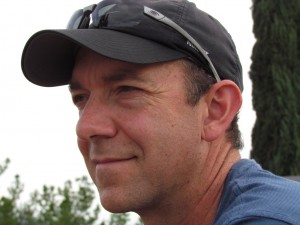Who is V3 Energy?
 Douglas Vaught, P.E., owner and principal engineer of Anchorage, Alaska-based V3 Energy, LLC, has extensive experience in wind-diesel system/isolated grid modeling and power system configuration design, wind flow modeling and turbine array design (using Danish WAsP software), wind power site selection and permitting, and meteorological test tower installation. Douglas also specializes in the cold climate village development challenge, namely severe cold temperatures, atmospheric icing, permafrost soils, and the logistical demands of remote area work.
Douglas Vaught, P.E., owner and principal engineer of Anchorage, Alaska-based V3 Energy, LLC, has extensive experience in wind-diesel system/isolated grid modeling and power system configuration design, wind flow modeling and turbine array design (using Danish WAsP software), wind power site selection and permitting, and meteorological test tower installation. Douglas also specializes in the cold climate village development challenge, namely severe cold temperatures, atmospheric icing, permafrost soils, and the logistical demands of remote area work.
Besides his renewable energy work, Douglas has consulting experience in environmental engineering, hazardous waste cleanup, and risk assessment modeling. Starting his career, Douglas served five years in the United States Navy as a nuclear powerplant engineering officer. Douglas is a graduate of the University of Kansas School of Engineering (B.S., Aerospace), the U.S. Navy nuclear power training program, and The Evergreen State College in Olympia, Washington (M.E.S., Environmental Studies). Since 2015, Douglas has served as a board member of Renewable Energy Alaska Project, an education and advocacy non-profit organization based in Anchorage that promotes the development of renewable energy for Alaska.
What does V3 Energy mean?
V3 Energy is a word play on the mathematical relationship between the power of the wind and the speed (or velocity) of the wind:
P = ½ x ρ x A x ν³
where P = power, ρ = air density, A = rotor area, and ν = wind speed.
The amazing significance of this equation is the cubic relationship between power and wind speed:
P ∝ ν³
If the wind speed doubles, the power potential of the wind octuples, or increases by a factor of eight (2 times 2 times 2)!
Taking this discussion a bit further, energy is power multiplied by time, which in practical terms is the power produced by a wind turbine delivered over a period of time. Power is expressed in kilowatts and energy in kilowatt-hours.
Note that due to a theoretical limitation (Betz’s law; see http://www.wind-power-program.com/betz.htm for an explanation) and practical engineering considerations of wind turbine design and operation, the power output of a turbine does not actually octuple when the wind speed doubles, but the power of the wind itself will.




